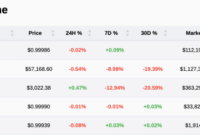Forex entry points are the gateway to profitable trading. This comprehensive guide will empower you with the knowledge and strategies to identify the optimal moments to enter the market, maximizing your chances of success.
From technical indicators to fundamental analysis, risk management to advanced techniques, we’ll delve into the intricacies of Forex entry point selection, equipping you with the tools to make informed decisions and navigate the ever-changing currency markets with confidence.
Forex Entry Point Strategies
Forex entry point strategies are essential for identifying the most opportune moments to enter a trade. By understanding different entry point strategies, traders can increase their chances of success in the foreign exchange market.
Breakout Entry Strategy
- Involves entering a trade when the price breaks out of a specific support or resistance level.
- Example: If the EUR/USD pair is trading at 1.1000 and breaks above 1.1020, a breakout entry strategy would suggest entering a long position.
Pullback Entry Strategy
- Involves entering a trade after a pullback or retracement in the price.
- Example: If the GBP/USD pair is trending up and pulls back to 1.3000, a pullback entry strategy would suggest entering a long position at 1.3000 or slightly above it.
Reversal Entry Strategy

- Involves entering a trade when the price reverses its trend.
- Example: If the AUD/USD pair is trending down and forms a double bottom pattern, a reversal entry strategy would suggest entering a long position at the neckline of the pattern.
Advantages and Disadvantages of Entry Point Strategies
Each entry point strategy has its own advantages and disadvantages. Breakout entry strategies offer the potential for high profits but also carry the risk of false breakouts.
Pullback entry strategies are less risky but may result in lower profits. Reversal entry strategies can be highly profitable but require patience and timing.
Identifying optimal Forex entry points is crucial for successful trading, but it’s equally important to implement sound Forex risk management strategies.
By understanding risk tolerance, setting appropriate stop-loss levels, and diversifying positions, traders can minimize potential losses and enhance their chances of profitability.
Moreover, incorporating risk management into the entry point selection process ensures that trades align with overall risk appetite and trading goals, ultimately leading to more informed and strategic decision-making.
Technical Indicators for Entry Point Identification
Technical indicators are mathematical tools that can help traders identify potential entry points. Some of the most commonly used technical indicators include:
Moving Averages

- Plotted as a line on the price chart and indicate the average price over a specified period.
- Traders can use moving averages to identify trends and potential entry points when the price crosses above or below the moving average.
Relative Strength Index (RSI)
- Measures the momentum of a price movement.
- Traders can use the RSI to identify overbought or oversold conditions, which can indicate potential entry points.
Stochastic Oscillator, Forex entry points
- Similar to the RSI, but measures the relationship between the current price and the price range over a specified period.
- Traders can use the Stochastic Oscillator to identify overbought or oversold conditions and potential entry points.
Bollinger Bands
- Consist of three lines: a moving average, an upper Bollinger Band, and a lower Bollinger Band.
- Traders can use Bollinger Bands to identify potential entry points when the price reaches the upper or lower Bollinger Band.
Fundamental Analysis for Entry Point Determination
Fundamental analysis involves analyzing economic data, news events, and market sentiment to identify potential entry points. Economic data, such as GDP growth, inflation, and interest rates, can have a significant impact on currency prices.
Forex entry points are crucial for successful trading, as they determine the potential profit and risk of a trade. One effective strategy for identifying entry points is range trading, which involves identifying a range of prices within which an asset is expected to move.
By analyzing support and resistance levels within this range, traders can identify potential entry and exit points for trades. Range trading strategy can provide traders with a disciplined approach to identifying Forex entry points, helping them to maximize their trading opportunities.
News events, such as political developments or natural disasters, can also cause currency prices to fluctuate. Market sentiment, which reflects the overall mood of the market, can also influence currency prices.
By considering fundamental factors, traders can gain insights into the potential direction of currency prices and identify potential entry points.
To pinpoint Forex entry points with greater accuracy, traders often leverage Forex trading indicators. These technical tools provide valuable insights into market trends and momentum, helping traders identify potential trading opportunities.
By combining the analysis of entry points with the guidance of Forex trading indicators, traders can enhance their decision-making process and improve their chances of successful trades.
Last Recap
Remember, mastering Forex entry points is an ongoing journey. By embracing continuous learning, refining your strategies, and managing risk effectively, you can consistently improve your trading outcomes and achieve long-term success in the dynamic world of Forex.
Commonly Asked Questions: Forex Entry Points
What are the most common types of Forex entry point strategies?
Trend following, breakout trading, range trading, and counter-trend trading are popular entry point strategies in Forex.
How can I identify Forex entry points using technical indicators?
Moving averages, Bollinger Bands, Ichimoku Cloud, and Fibonacci retracements are widely used technical indicators for identifying Forex entry points.
What is the role of fundamental analysis in Forex entry point selection?
Fundamental analysis considers economic data, news events, and market sentiment to assess the intrinsic value of currencies and identify potential entry points.
How can I manage risk when selecting Forex entry points?
Using stop-loss orders, position sizing, and defining risk-reward ratios are essential for managing risk and protecting your capital.




